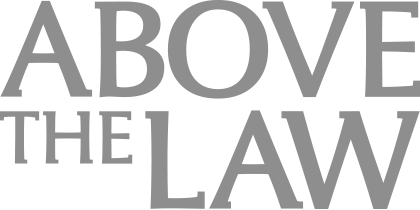From the Career Files: Getting Your Work Done (Part One)
A member of the ATL Career Center's team of expert contributors offers some practical advice for associates on how to get their work done.
Ed. note: This is the latest installment in a series of posts from the ATL Career Center’s team of expert contributors. Today, in the first of a two-part series, Joshua Stein gives some practical advice on how manage your workflow.
As your work piles up, you will often feel as if you can’t possibly finish it. Each project seems overwhelming when you think about it in the abstract. And as soon as you start work on a new project, and figure out what it will actually require, it can become even more overwhelming.
This article and its sequel share a few techniques I use to help gain some control over my workflow. Few of these ideas are original, but I’ve included my own variations and suggestions.

Tackling Deposition Anxiety: How AI Is Changing The Way Lawyers Do Depositions
A. Managing Everything. You will feel less overwhelmed if you protect yourself from feeling physically overwhelmed by the projects on your plate. For example, don’t cover your desk with piles of active tasks. For each active task, collect the various pieces of paper in a folder. Put all your folders away. Keep a “to-do” list of all your active tasks — every one of them — without writing other reminders to yourself anywhere else. Your to-do list should include everything. My own to-do list consists of a Word document with three columns: client work; other work; and personal projects. First priority tasks go to the top of each list. Some people use Outlook or even dedicated software. In any case, keep track of what you need to do and your priorities in a way that you don’t unintentionally leave anything behind. You should, however, also stay flexible in reordering and adjusting the list as you go. Regardless of format, a to-do list will help you feel more in control of your agenda, inviting you to set priorities and take each job one at a time. It’s far better than living with a chaotic physical mess that constantly taunts you about what you haven’t done….
B. The Email Deluge. To gain some control over your email, apply to your email inbox techniques like those suggested above for your pending paper projects. Don’t let email messages pile up in your inbox, where they will just torment you. Instead, create a folder within your email software for messages that demand action or a response. You might create multiple such folders for various categories and priorities, but don’t get carried away. If you can’t handle an “email task” immediately, you should probably add it to your to-do list, so your to-do list gives you a complete snapshot of what you need to do. Again, you want to avoid having a deluge of email staring you in the face at all times and making you crazy. But you don’t want to lose track of it either.
C. Beyond Your Control. Some parts of any project may lie beyond your control. You may need to deal with information or documents you need from other people; a review process that involves someone else; or some other part of the project that someone else is supposed to handle. Although you can’t control these pieces, you can manage them. First, identify them as early as possible, as one of the first things you do when you start a project. Second, figure out how much time these pieces of your project will reasonably take. Plan accordingly, adding a reasonable (or unreasonable) cushion if you can. Third, when these pieces involve other people, work with those other people in advance to make sure they can do their part when needed. Give them lead time and let them know what’s coming. Recognize that when you turn to them they may have other things going on, so they won’t be able to jump on your project immediately. Your project may take center stage for you, but you can’t assume other people will feel the same way.
Sponsored

Curbing Client And Talent Loss With Productivity Tech

How Thomson Reuters Supercharged CoCounsel With Gen AI Advances


Data Privacy And Security With Gen AI Models

How Thomson Reuters Supercharged CoCounsel With Gen AI Advances

D. Obstacle-Busting. In your head, what obstacles, real or imagined, have you set up to prevent yourself from starting this project and then carrying it through to completion? Identify them. Decide whether they’re real. If not, ignore them — they’re just excuses. As one easy example, sometimes you might fixate on how awful and unpleasant a particular project will be. Because you know it’s going to be awful and unpleasant, you put it off. Usually, you will produce better results by setting aside your obstacles or issues and just digging into the project. Stop waiting. The awful and unpleasant project won’t get any more appealing with the passage of time.
E. Smaller Pieces. If you can, break your project into smaller and manageable pieces. Give yourself a reward as you finish each piece. Don’t stop working until you earn the next reward. Your reward might be something as simple as checking your email, browsing all the interesting stories and archives at Above the Law, calling a friend, or getting up and getting some water. Except for those earned breaks, try to keep working. Resist the temptation to take random breaks to browse around online, or to get a snack. Just continue your work, like a diesel truck going up a hill. If that truck stops, it loses all its momentum. The same applies to you.
F. Priorities. Figure out how to set priorities among your projects. Then remember those priorities. Emergencies will still often go to the head of the line, but you should otherwise try rather hard to apply your priorities.
The next installment of this article will offer a few more suggestions on how to get your work done.
Sponsored

Legal Contract Review in Under 10 Minutes? Here’s How








